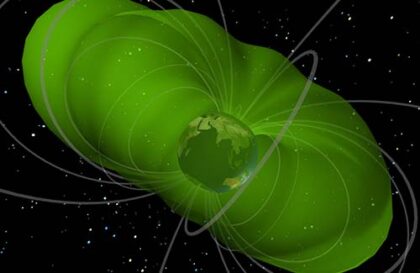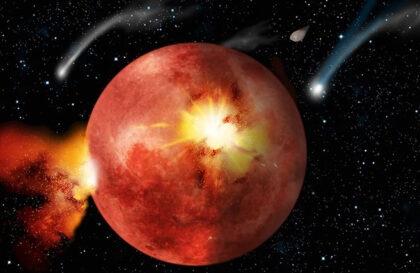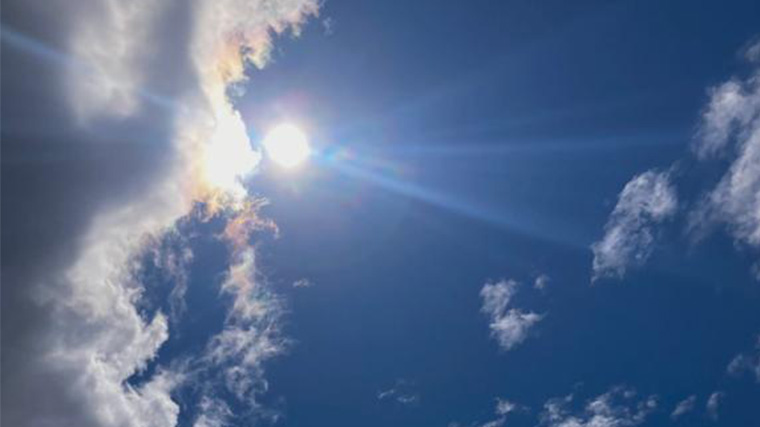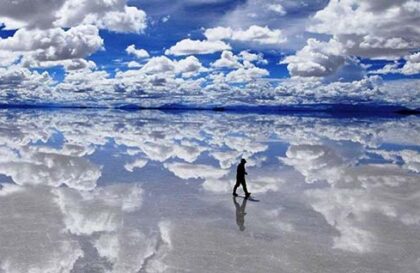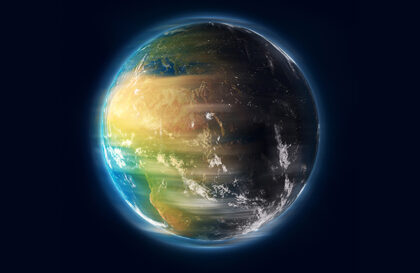Previously, scientists named the most dangerous galactic event for our planet. Possible threats include a nearby supernova, a powerful galactic gamma-ray burst, a solar superflare, and passage through an interstellar dust cloud. The last event, at least for the atmosphere, was the most dangerous.
Research by astrophysicist Dimitar Atri
Astrophysicist Dimitra Atri from the Blue Marble Institute for Space Science examined possible scenarios for cosmic events affecting Mars’ atmosphere and found that the planet’s passage through an interstellar dust cloud could be the most destructive, potentially leading to the loss of about 1% of the gas envelope. A nearby supernova explosion, a powerful galactic gamma-ray burst, and a solar superflare were less dangerous. The study results are available on the website arXiv.org.
The scientist carried out calculations for Mars and found that various cosmic events could reduce the mass of its atmosphere as follows: a superflare – by 950 tons, a gamma-ray burst – by 14 thousand tons, particles from a supernova – by 32 thousand tons, and passage through a cloud of interstellar dust – by 101 billion tons. The calculations were performed by numerical modeling using data on the Martian atmosphere from the MAVEN (Mars Atmosphere and Volatile EvolutioN) station, which has been studying the atmosphere of the Red Planet since 2014.
Credit: NASA and The Hubble Heritage Team (STScI/AURA) / LL Orionis
Super solar flare
Astrophysicists from Denmark, Belgium, China, and Italy are considering the possibility of a superflare on the Sun, which could potentially destroy most of life on Earth. They analyze the activity of 5,648 sun-like stars. Flares were recorded at 48 of them, and superflares and almost identical solar magnetic fields were detected at four.
Based on data from the Kepler and LAMOST telescopes, researchers suggest that superflares on the Sun and other stars are similar. The power of some registered superflares exceeds solar flares by tens of thousands of times. The study was published in Nature Communications.
Superflares on Sun-like stars
Japanese astronomers have identified the possibility of superflares on sun-like stars, surpassing in power the famous Carrington flare of 1859, information about which was published in Nature. Modern bursts recorded by spacecraft are much more powerful than those in the 19th century. Still, the reasons for such phenomena have yet to be established due to the lack of sufficient statistics. According to scientists, modern analogs of the Carrington outbreak could lead to catastrophic consequences.
Credit: Getty
In the new study, using data from the Kepler telescope, scientists observed 80,000 Sun-like stars and recorded flares on 146 over 120 days, with flares ranging in intensity from 10 to 10,000 times the power of the Carrington flare. Most superflares occur on rapidly rotating stars, but some have also been detected on stars similar to the Sun without confirming the hypothesis that such bursts are related to the interaction of a giant planet. Researchers have found that large dark spots on the star often precede super-powerful flares.
The Kepler orbital telescope was launched into orbit in March 2009. This device monitors a small area of the sky between the constellations Lyra and Cygnus, tracking the behavior of approximately 150 thousand stars. The primary mission of the device is to search for exoplanets. To do this, it registers the slightest fluctuations in the luminosity of a star caused by the passage of a celestial body across its disk. Later, it turned out that Kepler’s data could be helpful in other areas of astronomy. For example, data collected by the spacecraft on the star’s shaking helped determine the age of the system.
Banner image: NASA/JPL-Caltech
Image credit:
https://www.thesun.co.uk
https://cdn.sci.esa.int
https://www.anu.edu.au

